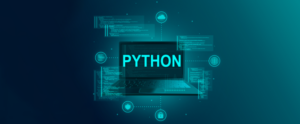Crypto Wallet App Development: Features,...
April 14, 2025

Python, a famous Software Development has set its place as the primary programming language for data science. Its effortlessness, flexibility, and immense range of libraries make it an ideal decision for novices and old pros the same. On the off chance that you’re anxious to plunge into the world of data analysis, machine learning, beginning with Python is an insightful choice. Notwithstanding, with such a lot of data accessible, graphing a course through this immense scene can be dismaying. Let’s separate the most common way of learning Python for data science into five sensible moves toward assisting you with changing from a fledgling to a confident data scientist.
Are you also wondering How to start learning Python for data science?
Learning Python for Data Science is an excellent decision given Python’s widespread usage in the field due to its simplicity and rich ecosystem of data science libraries and tools. Here’s a step-by-step guide to get you started:
Basic Syntax: Start by familiarizing yourself with Python syntax, variables, data types, and basic operations.
Control Structures: Learn about loops (for, while), conditionals (if, elif, else), and exception handling (try, except).
FunctionsUnderstand how to define and use functions, including lambda functions and comprehensions.
Data Structures: Delve into lists, tuples, sets, and dictionaries.
Resources: Python documentation, online platforms like Codecademy, and Coursera, and books like “Python Crash Course” by Eric Matthes or “Automate the Boring Stuff with Python” by Al Sweigart.
Object-Oriented Programming (OOP): Understand classes, objects, inheritance, and other OOP concepts.
Popular Libraries: Start with libraries like NumPy (for numerical computing) and Pandas (for data manipulation).
Visualization Libraries: Learn about Matplotlib and Seaborn to visualize data.
Resources: Dataquest, DataCamp, and “Python for Data Analysis” by Wes McKinney.
Descriptive Statistics: Mean, median, mode, variance, standard deviation.
Hypothesis testing, p-values, and confidence intervals are examples of inferential statistics.
Mathematics: Dive into linear algebra, calculus, and probability, as they form the backbone of many data science techniques.
Resources: Khan Academy, Coursera courses (such as “Statistics with Python” by the University of Michigan), and “Practical Statistics for Data Scientists” by Peter Bruce and Andrew Bruce.
Scikit-learn: A key library for machine learning in Python. Start with basic algorithms like linear regression and work your way up to more complex ones.
TensorFlow and PyTorch: For deep learning.
Other Libraries: Statsmodels (for statistical models), Scipy (for advanced scientific computing).
Machine Learning Concepts: Understand overfitting, cross-validation, and evaluation metrics (like RMSE, accuracy, etc.).
Resources: Andrew Ng’s Machine Learning course on Coursera, “Hands-On Machine Learning with Scikit-Learn, Keras, and TensorFlow” by Aurélien Géron, and platforms like Fast.ai for deep learning.
Kaggle: Engage in Kaggle competitions or explore its datasets to hone your skills.
Github Repositories: Collaborate on open-source projects or showcase your own projects.
Specialize: Depending on your interest, delve deeper into areas like NLP, computer vision, time series analysis, etc.
Continuous Learning: The field is always evolving. Keep up to date on the latest approaches, research, and tools. Take advantage of workshops, webinars, and conferences.
Certainly! Learning Python in 5 weeks is feasible, especially if you have some prior experience with programming. Python is known for its clarity and readability, which makes it an extraordinary language for fledglings. Alongside the basic syntax, understanding Python Environment Variables is also crucial as it helps in configuring and managing the behavior of the Python runtime. Be that as it may, the profundity of your comprehension will rely upon how much time and exertion you devote to the growing experience every day. If you’re aiming for a basic understanding and the ability to write simple scripts, 5 weeks is more than sufficient.
For more complex topics, like web development with Python or data analysis, you may need additional time. Regardless, in 5 weeks, you can definitely gain a solid foundation and familiarity with the language. To maximize your learning during this phase, you must use a combination of materials such as online lessons, books, and practice tasks.
Python has become the leading language because it’s simple yet powerful. Many Python Development Companies have also recognized its importance in the domain. But remember, learning Python for this purpose is ongoing as python is the future of web app development. The world of data science keeps changing, so you need to keep learning and practicing. Stay curious and involved, and you’ll always be updated in this exciting field.